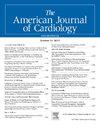美国城乡心血管疾病差异——如何改善美国农村人群的预后?
IF 2.1
3区 医学
Q2 CARDIAC & CARDIOVASCULAR SYSTEMS
引用次数: 0
摘要
在过去的四十年里,在美国,心血管疾病(CVD)发病率和死亡率在农村和城市地区之间的差距逐渐扩大,被称为“农村死亡率惩罚”。城乡心血管疾病差异的驱动因素是多因素的,包括人口统计学、教育、经济机会、获得医疗服务和医疗质量的差异。由于美国农村地区的复杂性和异质性,农村的定义差异很大,导致在量化差异和有针对性的干预措施方面面临挑战。增加农村地区获得心血管护理机会的潜在解决办法包括:扩大初级保健和心脏病学工作人员、在农村保健提供者和学术医疗中心(AMC)之间建立伙伴关系、在服务不足或资源匮乏的农村社区建立更多的外展诊所、制定农村提供者培训方案、扩大和改进远程医疗服务、制定全社区心血管疾病预防方案。扩大农村地区的医疗保险覆盖面,政府继续支持农村医院,并解决健康的社会决定因素,因为农村人口往往面临更高的贫困率、粮食不安全、失业、住房不稳定和受教育机会有限,所有这些都加剧了健康差距。本文章由计算机程序翻译,如有差异,请以英文原文为准。
Rural/Urban Disparities in Cardiovascular Disease in the US—What Can be Done to Improve Outcomes for Rural Americans?
For the last forty years in the United States, there has been a progressively widening disparity in cardiovascular disease (CVD) morbidity and mortality between rural and urban areas known as the “rural mortality penalty.” Drivers of rural-urban disparities in CVD are multifactorial, including differences in demographics, education, economic opportunity, access to care, and healthcare quality. Because of the complex and heterogenous nature of rural areas in the United States, definitions of rural vary significantly, leading to challenges in quantifying disparities and targeting interventions. Potential solutions to increase access to cardiovascular care in rural areas include initiatives to expand the primary care and cardiology workforces, build partnerships between rural healthcare providers and academic medical centers (AMC), establish more outreach clinics in underserved or poorly resourced rural communities, develop rural provider training programs, expand and improve telemedicine offerings, develop community wide CVD prevention programs, expand health insurance coverage in rural areas, continue government support of rural hospitals and address social determinants of health as rural populations often face higher rates of poverty, food insecurity, unemployment, housing instability, and limited access to education, all of which exacerbate health disparities.
求助全文
通过发布文献求助,成功后即可免费获取论文全文。
去求助
来源期刊

American Journal of Cardiology
医学-心血管系统
CiteScore
4.00
自引率
3.60%
发文量
698
审稿时长
33 days
期刊介绍:
Published 24 times a year, The American Journal of Cardiology® is an independent journal designed for cardiovascular disease specialists and internists with a subspecialty in cardiology throughout the world. AJC is an independent, scientific, peer-reviewed journal of original articles that focus on the practical, clinical approach to the diagnosis and treatment of cardiovascular disease. AJC has one of the fastest acceptance to publication times in Cardiology. Features report on systemic hypertension, methodology, drugs, pacing, arrhythmia, preventive cardiology, congestive heart failure, valvular heart disease, congenital heart disease, and cardiomyopathy. Also included are editorials, readers'' comments, and symposia.
 求助内容:
求助内容: 应助结果提醒方式:
应助结果提醒方式:


